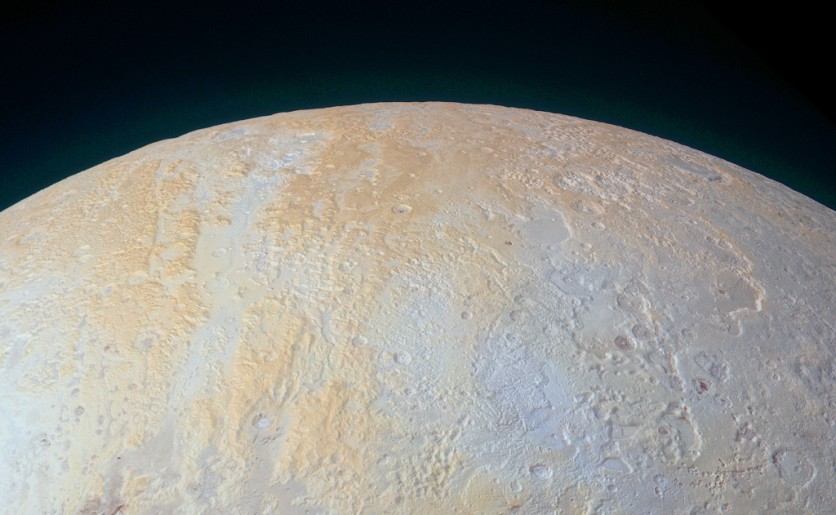Prepare to be mesmerized by a glimpse into the icy wonders of Pluto's northern canyons, captured in a stunning image courtesy of NASA's New Horizons spacecraft. The image, bathed in contrast-enhanced colors, presents a captivating view of the distant dwarf planet's rugged terrain.

The Icy Splendor of Pluto
This extraordinary snapshot, taken in July 2015 during New Horizons' historic first reconnaissance flight through the Pluto system, offers a tantalizing look at Lowell Regio - a region named in honor of Percival Lowell, the visionary founder of the Lowell Observatory.
Known for his daring speculation about Martian canals, Lowell initiated the quest that ultimately led to the discovery of Pluto in 1930 through the efforts of Clyde Tombaugh.
In this enchanting image, Pluto's North Pole lies above and slightly to the left of the center, providing a unique perspective of the planet's captivating surface.
The expansive, pale-bluish canyon floor to the left measures an impressive 70 kilometers (45 miles) in width and majestically stretches vertically toward the south. As you venture upwards, the landscape transitions to a warm, yellowish hue, indicative of higher elevations.
However, this breathtaking visual is not the only treat Pluto has in store. New Horizons' measurements have unveiled a hidden wealth of information. Amongst the nitrogen ice that adorns the region, the spacecraft detected the presence of methane ice in abundance throughout Lowell Regio.
This revelation sheds light on the complex composition of Pluto's surface, offering scientists a window into the intriguing mysteries that this distant celestial body holds.
Amid the palette of colors that paint Pluto's surface lies an extraordinary tale of a planet named by an unexpected source - an 11-year-old girl.
In a world dominated by the gravitas of astronomical discoveries, Pluto stands out as the only celestial body in our solar system to receive a moniker from a young individual. This footnote adds a touch of humanity to the otherwise vast and mysterious expanse of space.
"Dwarf Planet"
Pluto was once considered the ninth planet in our solar system. It was initially classified as a planet when it was discovered by astronomer Clyde Tombaugh in 1930.
For decades, Pluto was regarded as the smallest and most distant planet from the Sun, and it was included in educational materials, textbooks, and popular culture as the ninth planet.
However, in 2006, the International Astronomical Union (IAU) redefined the criteria for classifying celestial bodies as planets. Under the new definition, Pluto did not meet all of the criteria necessary to be considered a planet.
Specifically, it did not fulfill the requirement to "clear its orbit" of other debris, as it shares its orbital neighborhood with numerous other objects in the Kuiper Belt.
As a result, Pluto was reclassified as a "dwarf planet" rather than a full-fledged planet. Despite its reclassification, Pluto continues to be a fascinating object of study and exploration, and its history as a planet and subsequent reclassification have contributed to a better understanding of the complex nature of our solar system.
Related Article : NASA James Webb To Study Pluto and Other Icy Space Objects in Kuiper Belt-Cold Moons Can Support Life?

ⓒ 2025 TECHTIMES.com All rights reserved. Do not reproduce without permission.




